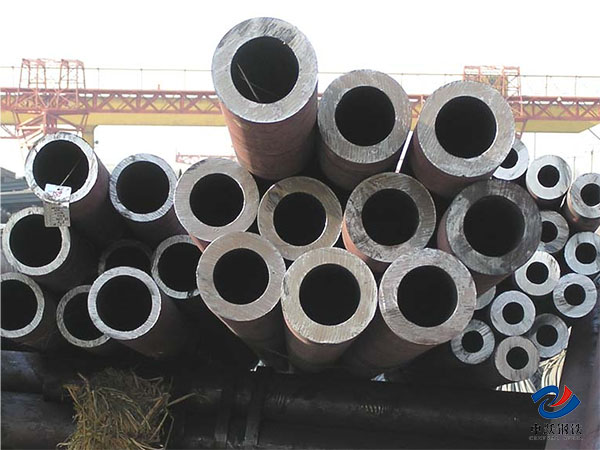Hot rolled seamless pipe is made by calcination of billet at high temperature, perforation, rolling, sizing, straightening and other process steps. Because of its good mechanical properties and high production efficiency, it is widely used in oil, natural gas transportation, machinery manufacturing and other fields.

However, in the process of reproduction, due to the quality of raw materials, temperature control, equipment and other factors, it is easy to produce some defects, which not only affect the appearance of the product, but also may directly affect the performance and safety of the product. In this paper, the common defects of hot-rolled seamless steel pipes and their causes are analyzed in detail.
Common defect
1. Surface scratches or pits
The main performance is that there is a certain width and depth of pits or scratches on the inner and outer surfaces of the steel pipe. Such defects mainly come from the residual oxide skin on the surface of the raw material or the impurities mixed in the raw material, which makes the billet and the equipment friction, thus forming scratches, pits or black spots.
2. Folding defect
In the process of hot rolling, due to the cracks and pitting in the subskin bubbles, inclusions or surface of the tube billet, the folding phenomenon is easy to occur in the process of hot rolling and subsequent drawing, which is manifested as the folding, depression or local uneven thickness of the inner wall of the tube.
3. Row lengthwise
Due to the improper control of mold parameters, rolling tension and heating temperature in the rolling process, scratches or lines along the length direction may be produced on the surface of the pipe, which not only affects the appearance, but also may become a hidden danger of subsequent crack growth.
4. Folding defects
In the continuous rolling process, if the billet temperature is uneven or the mill parameters are not set properly, it is easy to have complex defects such as double seam folding. Such defects are usually shown as abnormal section shape in local area, which affects the overall mechanical properties of the pipe.
The main cause of defects
1. Raw material problem
Billet defects: there are subcutaneous bubbles, inclusions, cracks and pitting defects in the raw material, if it is not completely eliminated before hot rolling, it will be amplified during the rolling process, resulting in internal folding, scratches and other problems.
Surface pollution: impurities such as residual oxide and rust on the billet surface are easy to form local defects during high temperature rolling.
2. Improper control of process parameters
Temperature control: In the hot rolling process, uneven heating or insufficient temperature of the billet will lead to insufficient local plasticity, resulting in cracks, internal folding or scratches.
Rolling tension and speed: the mill transfer tension is too large or improper speed, easy to cause uneven material deformation or surface stress concentration, resulting in longitudinal tracing and folding defects.
3. Equipment adjustment and process operation problems
Mold status: Mold wear or inaccurate correction will lead to steel pipe size deviation and surface defects.
Process connection problems: improper connection of hot rolling, sizing, straightening, cutting and other processes may form stress concentration areas between different processes, resulting in surface cracks and defects.
Improvement measure
Improve raw material quality: strengthen billet inspection to ensure that raw materials have no obvious subcutaneous bubbles, inclusions or cracks.
Optimize process parameters: strictly control key parameters such as heating temperature, rolling tension and rotational speed to ensure uniform temperature throughout the hot rolling process and reduce stress concentration.
Equipment maintenance and mold management: regular inspection and correction of rolling mill equipment and mold to ensure that they are in good condition to reduce defects caused by equipment problems.
Improve the process connection: strengthen the connection management between each production process, ensure that hot rolling, sizing, straightening and other processes seamless docking, reduce the risk of stress concentration between processes.
In summary, by improving raw material quality, optimizing process parameters and strengthening equipment management, these defects can be effectively prevented and reduced, thereby improving product quality and safety.
